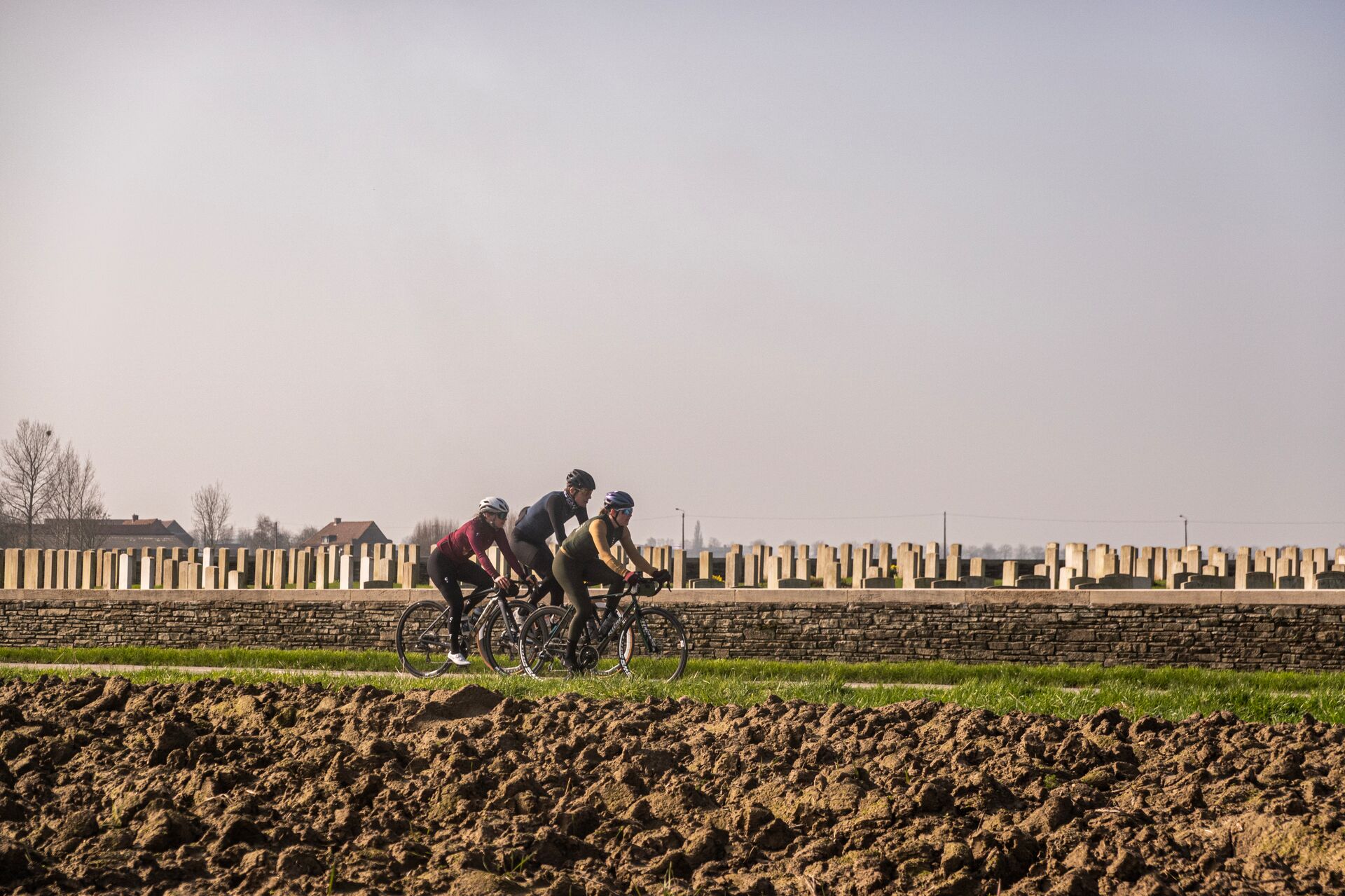The route step by step
Start
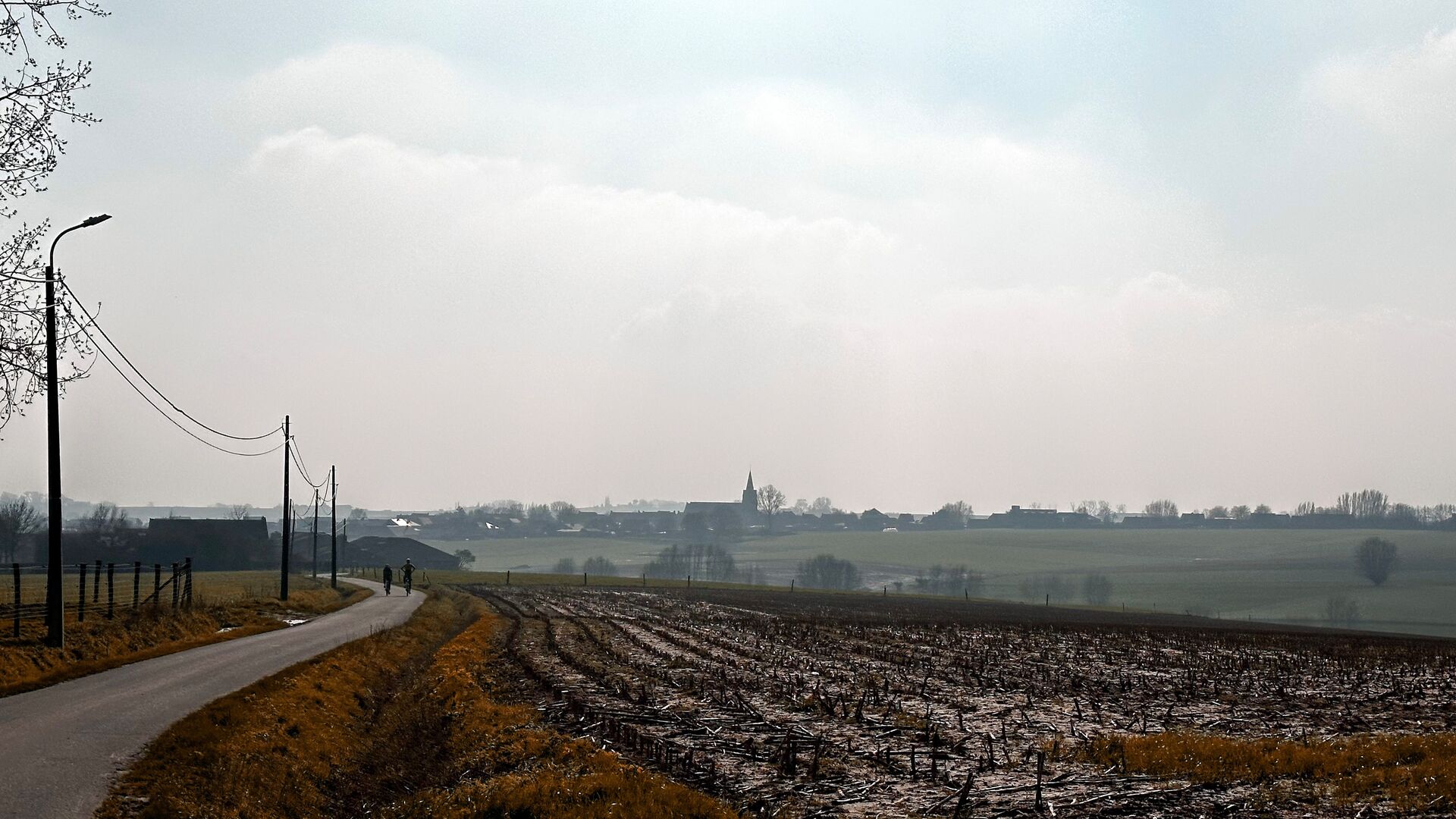
The route of Ghent-Wevelgem in Flanders Fields conquers the most important climbs of the ‘Ghent-Wevelgem’ race. The parcours has 2 loops. You can ride the 56k loop with 3 notorious Plugstreets and some steep hills, including a double climb of the Kemmelberg. Just follow the red signposts. But to warm up you can add a 28k loop to Ypres and cycle through the Menin Gate before the real climbing starts.
The first part towards Ypres takes us on typical Flemish roads and rolling countryside. We ride straight through farmland and past ploughed fields. A little further, we are immediately confronted with the facts: two large mine craters. A painful reference to the atrocities of 1917. Before arriving at Ypres, we see the war graves left and right, the theme of the day.
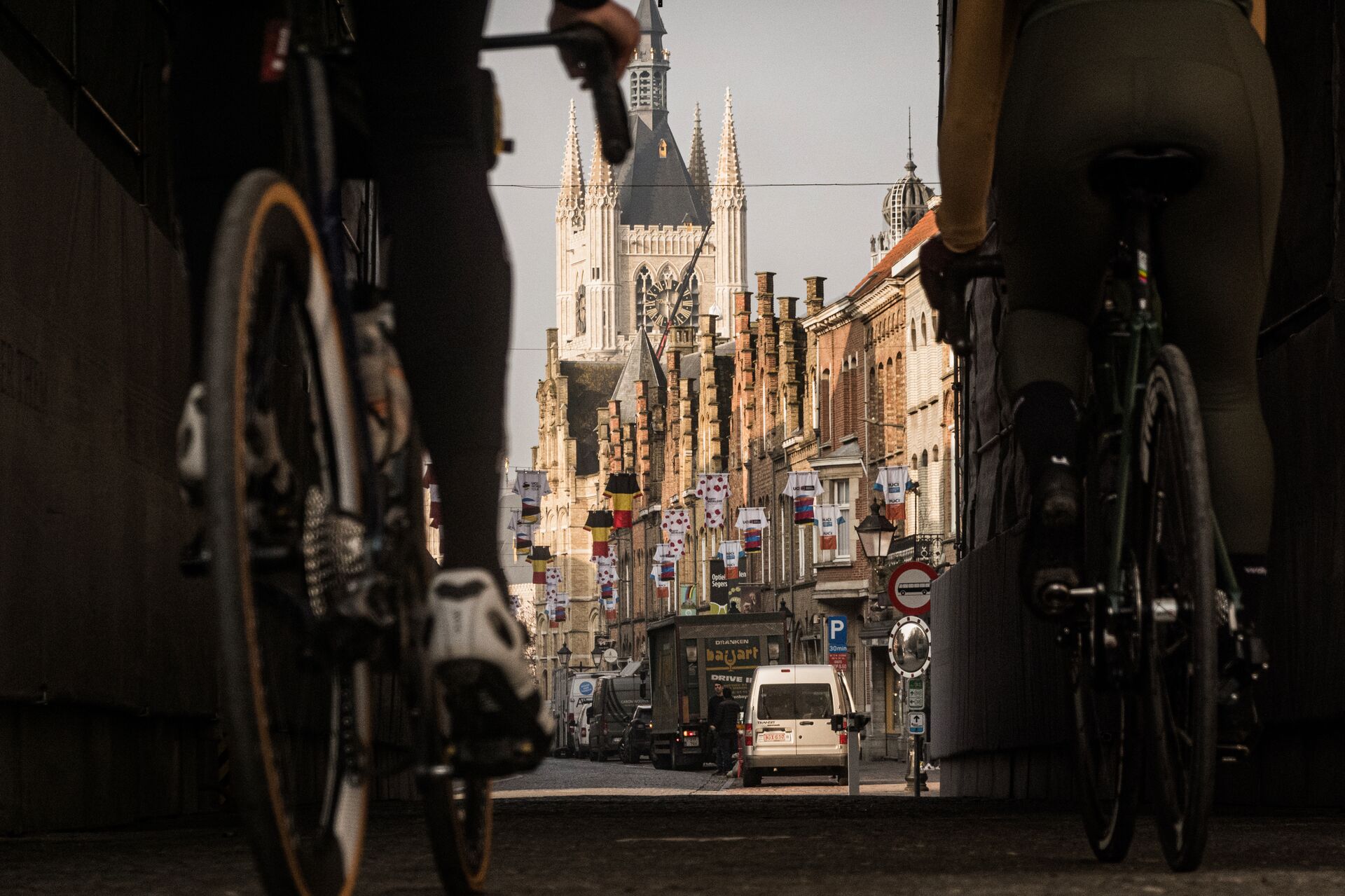
Menin Gate - Ypres
In Ypres, our attention is focused on the Menin Gate. The adjacent wreaths with the famous red poppy flowers move us. Every day at 20:00, wind and weather, the last post is blown here. An impressive ceremony, where the words 'we will remember them' are carried extra.
We turn back to Kemmel, because in the end that's what we came for: for the climbs of this route. We turn right towards the Lettenberg. This is a nice warm-up with 2.5 km in total at a moderate gradient. Shortly after the descent of the Lettenberg comes the Scherpenberg. What is striking is that these climbs and their associated hills lie very open in the landscape. They almost seem a bit lost, among the otherwise slightly undulating field.
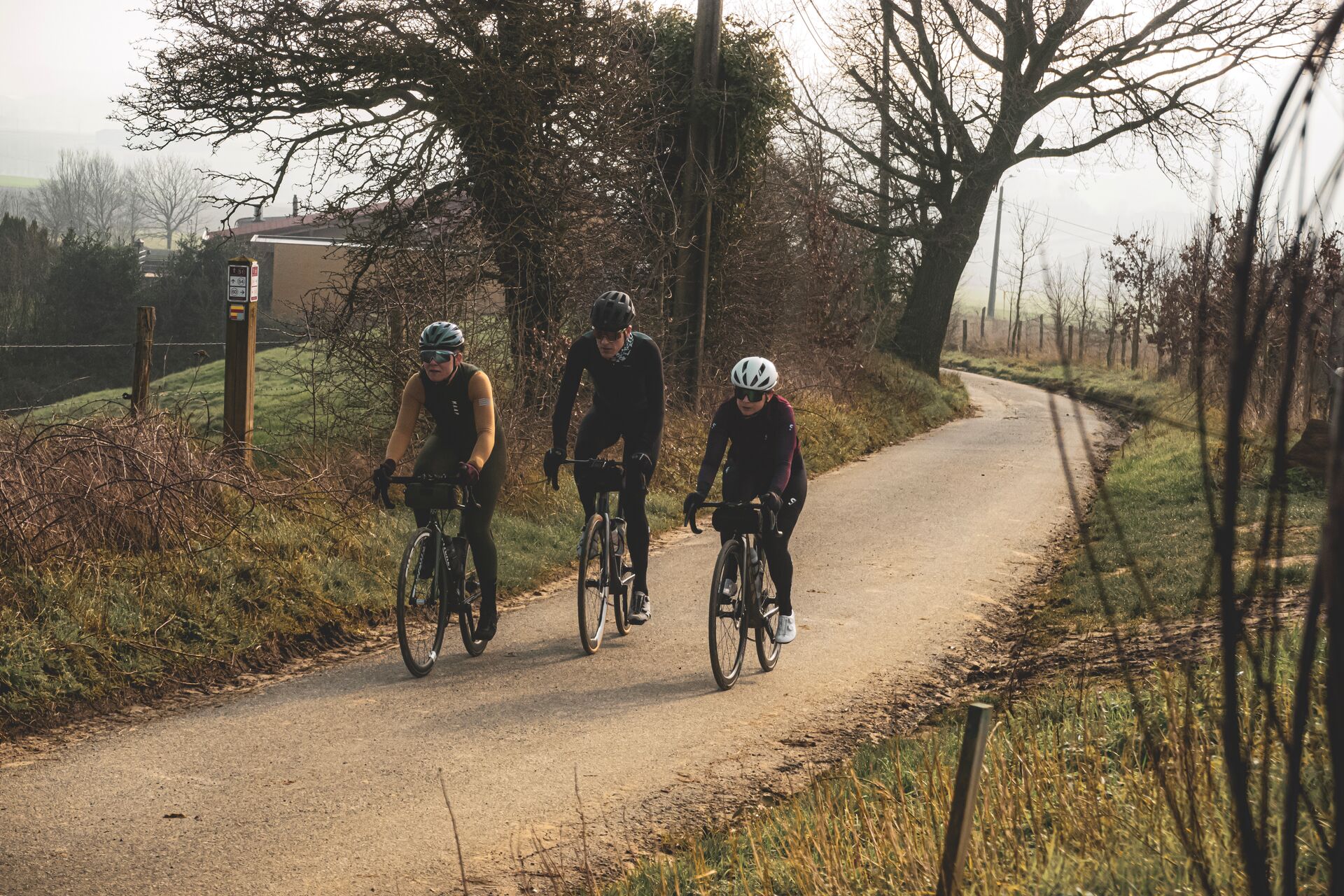
Scherp means 'sharp' in Dutch, and so it comes as no surprise that the Scherpenberg has ramps of up to 11%. The road is tiny, and as it curves over the roots of nearby trees. Combine this with the Zandberg.
Via the back of Sulferberg, we continue through small villages such as charming Westouter. Again and again we see the signs: 'commonwealth graves' or 'French War Cemetery'. We will remember them. Then comes the double bill Schomminkelstraat & Banenberg. Together they form a longer and steeper climb, which ends under the cable car next to a beautiful windmill. Here we climb at 14% for some stretches.
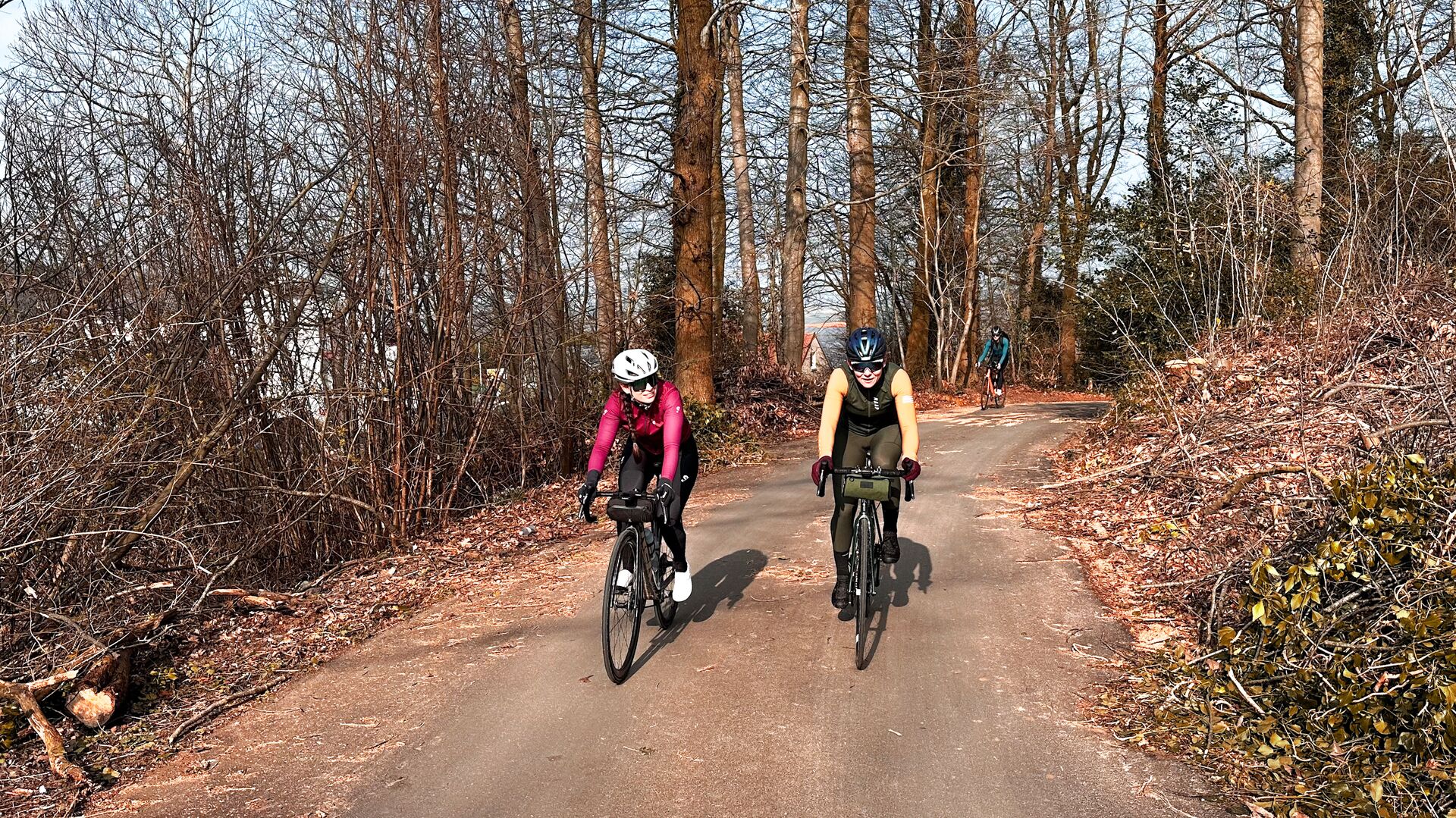
A very short and venomous climb or should we say 'wall'. Only 270m long, with an average incline of 9% and a maximum incline of 20%. If you manage to pull your eyes away from your front wheel, you will note the incongruous sight of a ski-lift above the road. This climb is used in Gent-Wevelgem and one of our favourites.
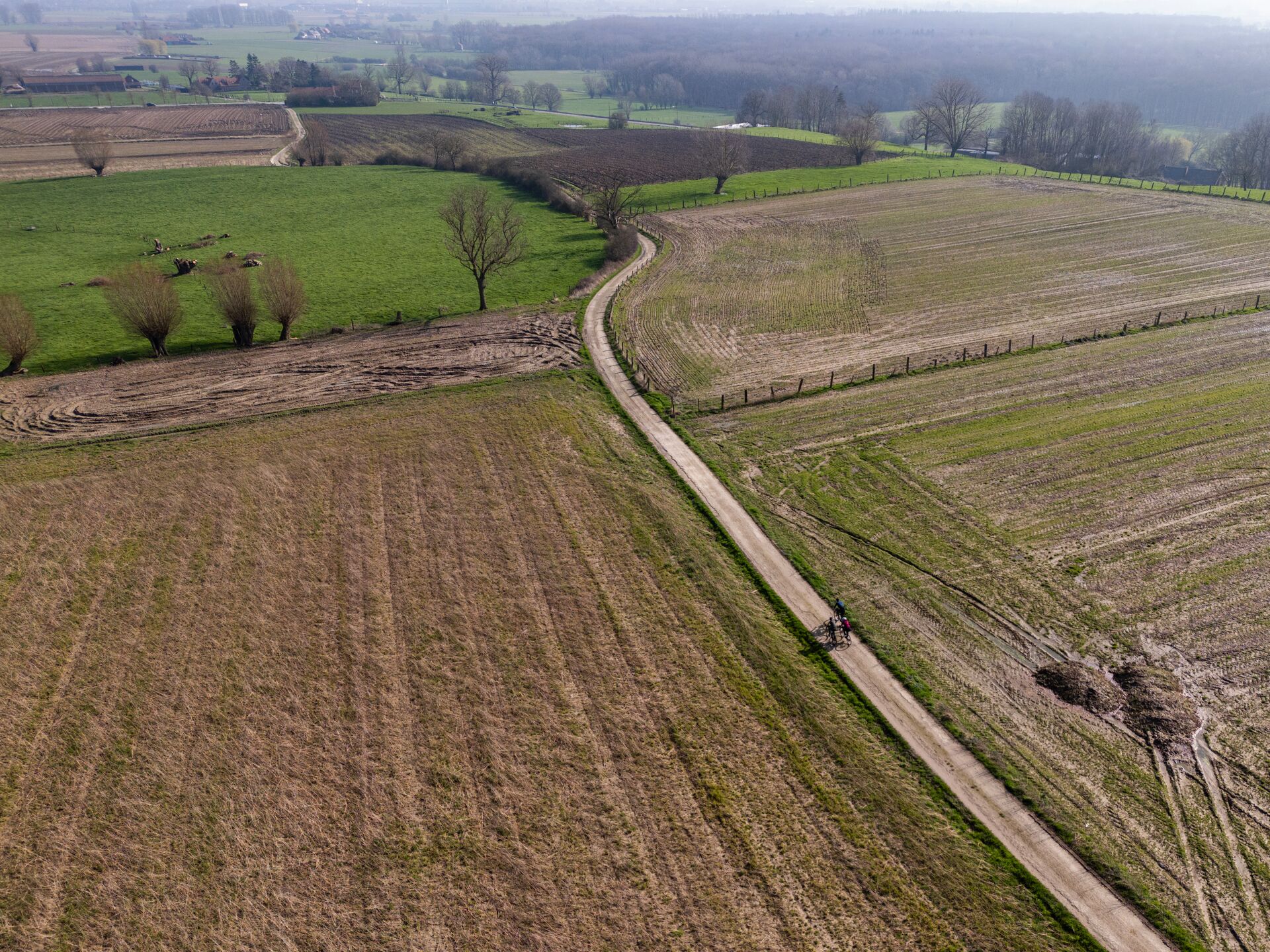
Plugstreets
The famous 'plugstreets' near Ploegsteert are next on the menu. The name came about because British soldiers couldn't pronounce Ploegsteert. Here we encounter three nice gravel strips, which provide the necessary spectacle in the race. The monument of the Christmas Truce, at the level of the second strip, silences us. In 1914, this is where the guns fell silent during the Christmas period and the toast was fraternised, as history goes. Football was even said to have been played there, but that has never been confirmed. The memorial wears a shirt of Liverpool football club, but many English, Irish and Scottish clubs lost almost their entire first team in The Great War.
Time for the finale. Kemmelberg
Certainly the Kemmelberg from the north-west side is one to start well. Not only the gradient (up to 17%) but also the cobblestones make this a climb to toil on. The circuit is a kind of turn and turn. You go up Kemmel, then off it, then make a corner in the fields and ride up the difficult side Kemmel again. Then tightly right into the descent to finally conquer Monteberg once more.
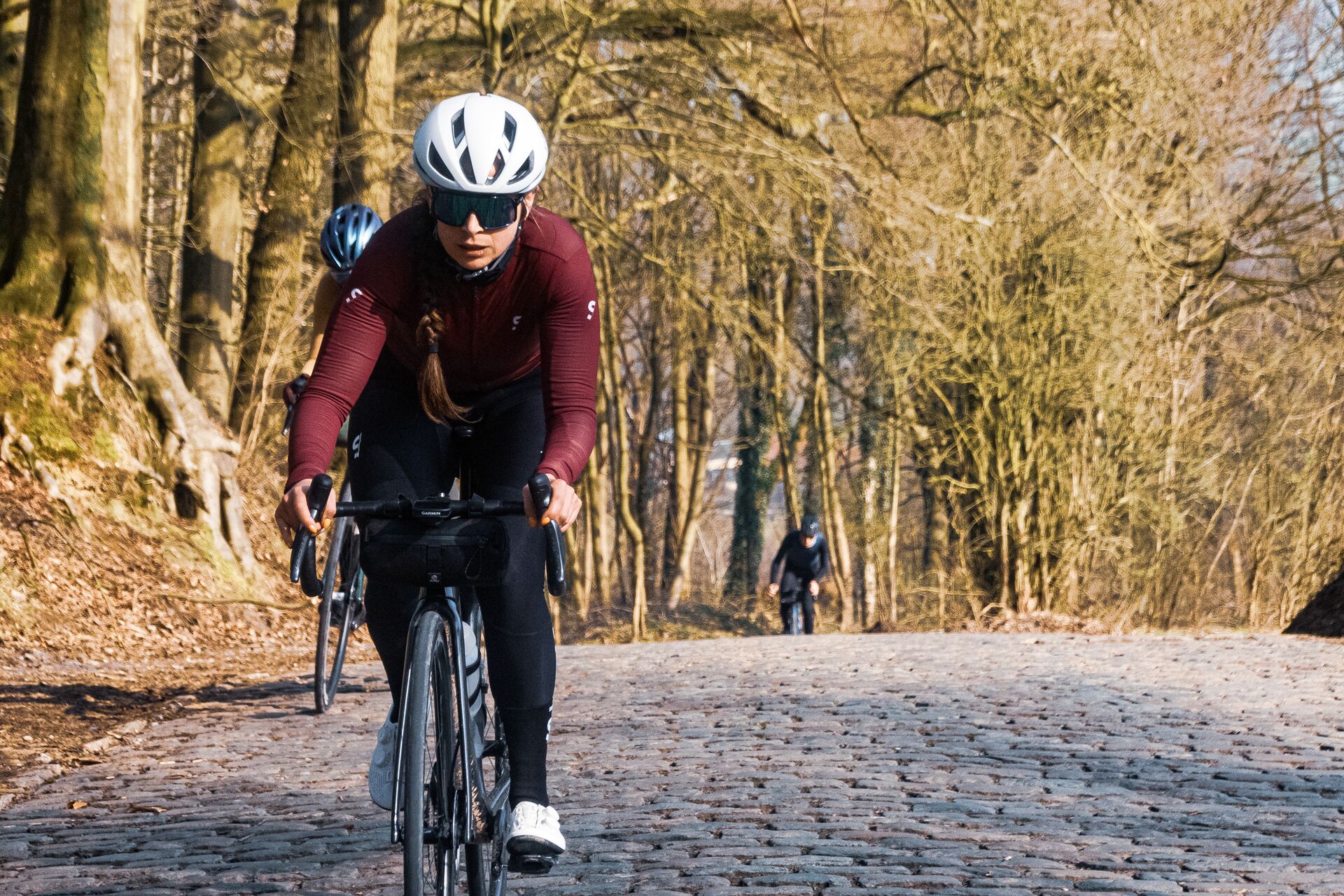
At 156 meters the Kemmelberg is the highest point in West Flanders. Named after the village of Kemmel on its eastern slopes, during World War One it was the scene of brutal slaughter, the roads up it's slopes were only constructed to allow the hauling of munitions up to the gun emplacements on top. Today, it is the showpiece of Gent-Wevelgem, one of the great Classics and whose two ascents of the Kemmelberg’s notorious cobbled pavement, or pavé, continued to court controversy. For if the riders must climb from the south-east the Kemmel twice, for a while they also had to descend down the northern face. With its 20 per cent gradient over unpredictable terrain, the Kemmelberg has witnessed some truly horrendous crashes.
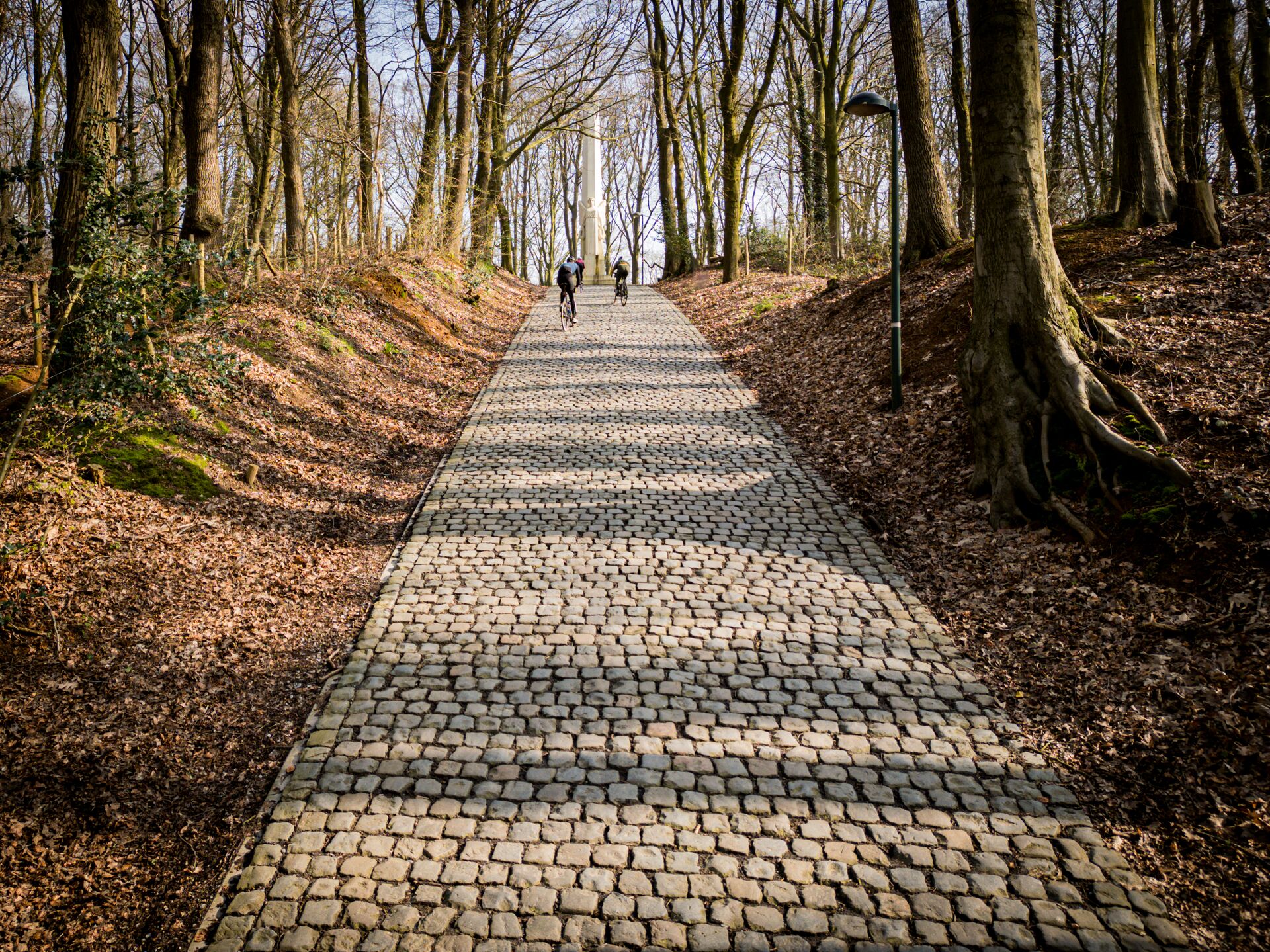
This is the steepest and longest side of the Kemmelberg, with a maximum gradient of over 20%. Gent-Wevelgem used to descend this way but a Jeremy Roy crash in 2002 underlined the danger of using steep, tree shaded cobbled descents in the finale of a big race.
Riding out of Kemmel, you turn right onto the stones which trick you into thinking the summit is just around the long left hand bend before kicking you in the teeth with the last 20% ramp before the summit at the Ossuaire built to honour the remains of some 5294 French troops killed in fighting over the possession of the hill, who's guns overlooked the entire Ypres Salient. Of these, only 57 were identified. It is the largest French military monument outside of France.
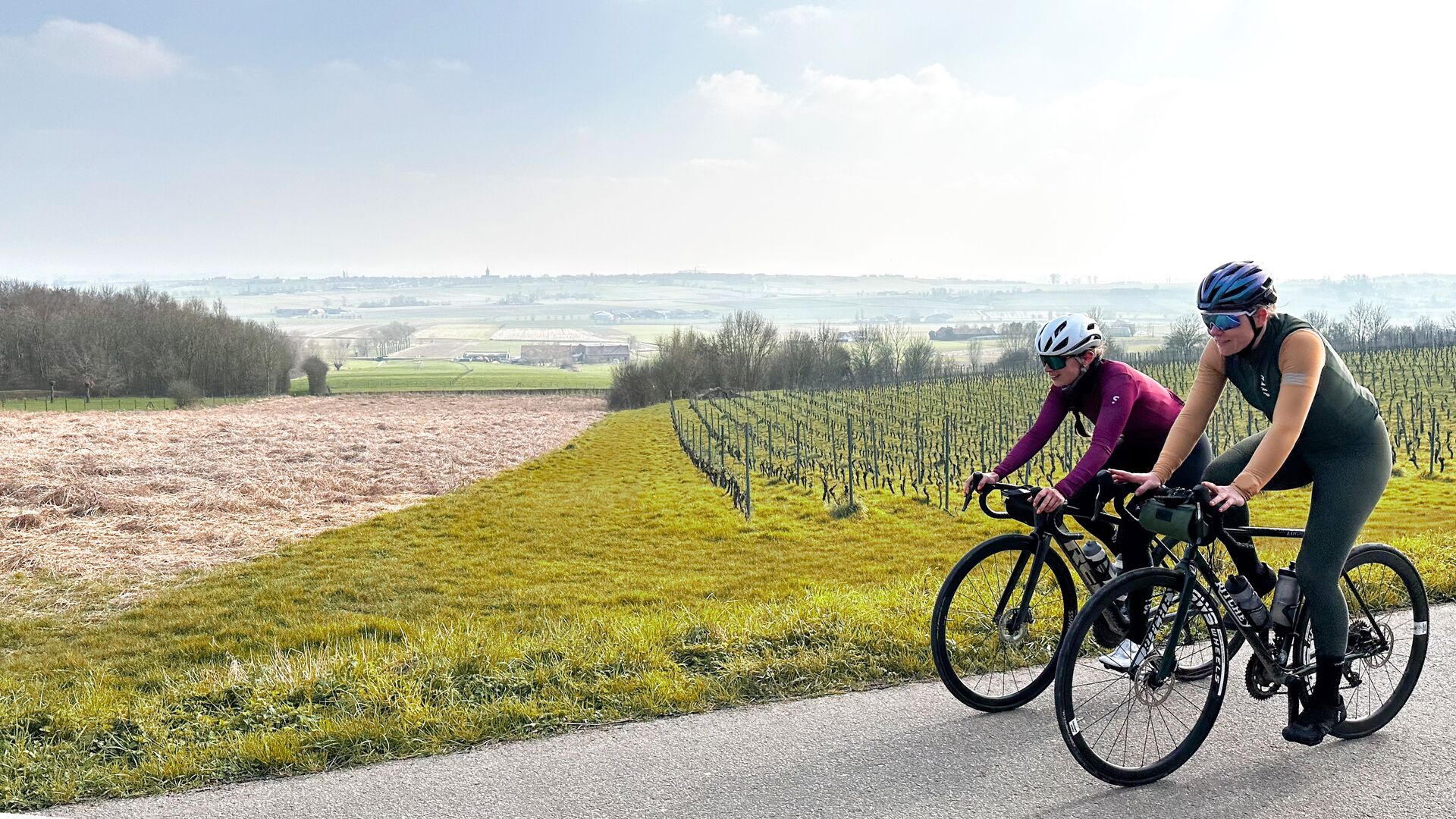
Enjoy the view at Monteberg
A well deserved post-ride Picon!
To finish, we park our bike on the terrace of cafe Boutique. If cycling prevails anywhere, it is here. We order a picon-vin-blanc, because that really goes with the territory. We won't soon forget this route. We will remember (them).
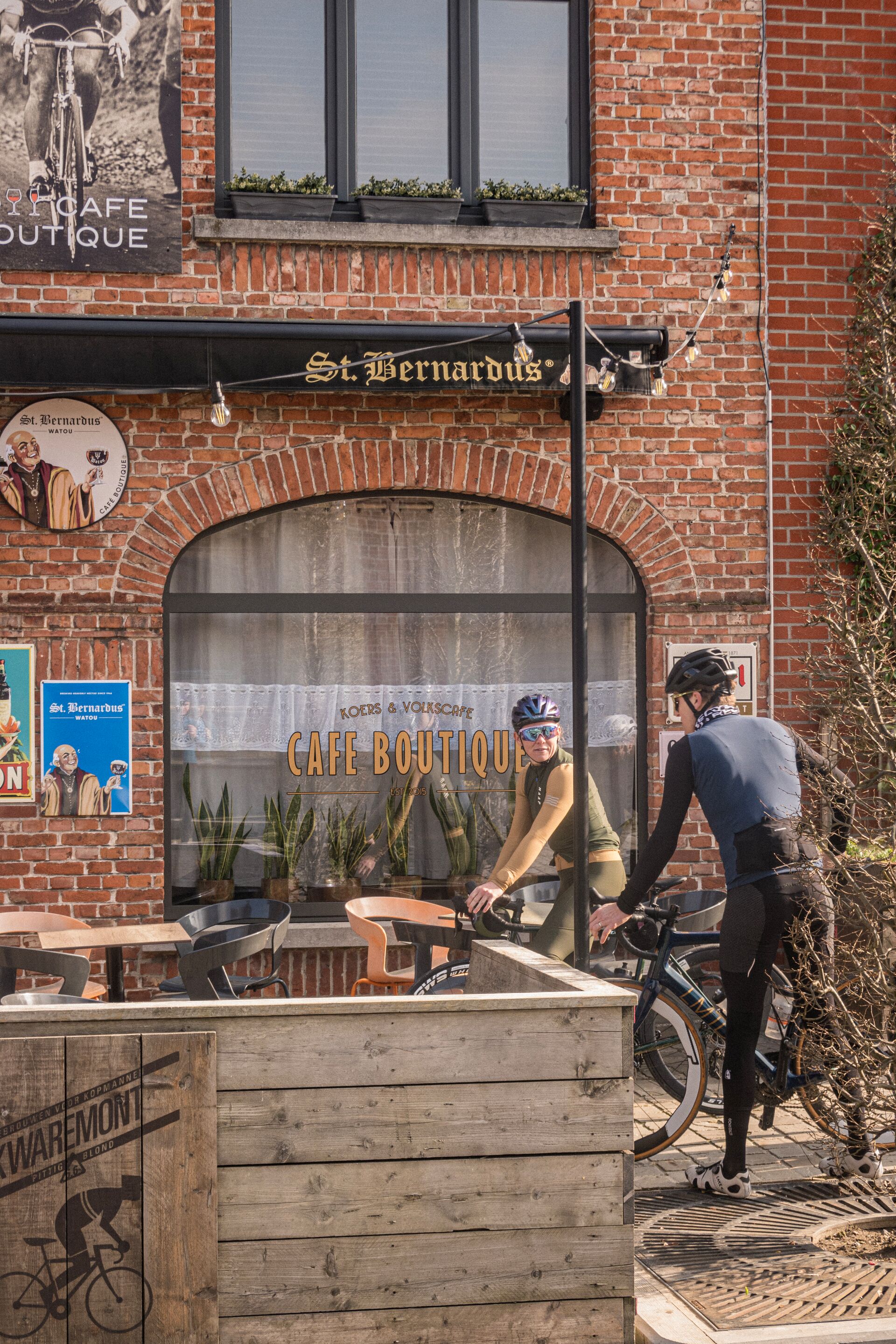
A great cycling themed bar at the foot of the Kemmelberg. Perfect for your pre-ride coffee or post-ride beer. Or maybe try the local speciality: Picon.
This bar is owned by former amateur cyclist Pieter and is home to the cycling club 'De Vlammers'. Inside you'll find an original jersey of former Belgian Champion, Herman Van Springel. And they show all the cycling races on television.
Definitely worth a stop!
Finish

Plan your stay
Get the hottest tips and tricks to take on Flanders by bike! When should you visit? Where can you rent a bike? What's the perfect place to stay? Or drink the perfect Belgian beer? Check it out!
Related bucketlists
Epic Stories
Those who adore cycling are bound to collect some great stories. Here they are, or at least some of them.
